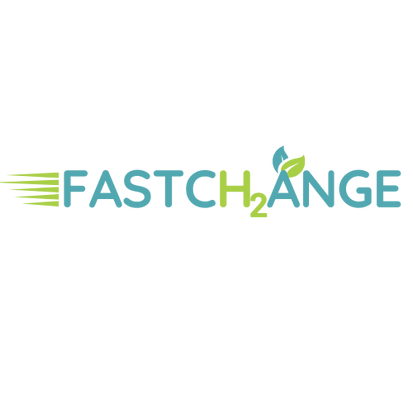

FASTCH2ANGE
Fluorine-free materialS for sustainable-by-design electrolysis Cells towards the H2-based new generation of clean Energy technologies
.png)

Project
Summary
FASTCH2ANGE aims to pioneer a sustainable-by-design method for developing TRL4-compliant 100% PFAS-free proton exchange membrane-based electrolysis (PEMEL) cells. It will focus on developing four fluorine-free components: proton exchange membranes, catalyst-supporting layers, transport and gas diffusion layers, and new sealing components like gaskets and insulation plates. FASTCH2ANGE will achieve this by designing, developing, and testing new PFAS-free PEMs at TRL4. These PEMs will be made using TEOS-based hybrid organic-inorganic ionomers, targeting an operating current density of 3.0 A/cm² at 1.8 V cell voltage, with a degradation rate under 5 μV/hr by 2030. Innovations in catalyst coating technologies will be explored, including an optimized ink deposition technique. Additionally, fluoroelastomers-free liquid-gas diffusion layers will be prepared using a sol-gel process with silicon alkoxides to improve hydrophobicity and thermal stability. FASTCH2ANGE also plans to develop PFAS-free sealing components using silicon-based sol-gel formulations and advanced materials like stainless steel, polyetheretherketone, and polyphenylene sulfide, employing high-performance coatings such as diamond-like carbon and ceramic. Hence, an advanced testing platform utilizing multisingle cells proprietary technology will test the newly developed catalyst-coated membranes (CCMs), achieving a first-of-its-kind PFAS-free 5-cells stack with optimal components. Harmonized European testing protocols will be used, and the cross-integrability with fuel cell technologies will be assessed in close synergy with SUSTAINCELL and EVERYWH2ERE projects. FASTCH2ANGE new components will allow the replacement of 10-11% by weight of a new generation of electrolysis systems with harmless materials, that for the envisioned European 140 GW capacity would mean saving up to 10500 tons of PFAS crafted into PEMEL components by 2030.
Specific Needs
Europe aims to phase out PFAS from 2026, despite their essential role in electrolysis and fuel cells, as these substances are known reproductive and endocrine disruptors that persist in the environment; nonetheless, to meet the growing demands of the hydrogen sector, an estimated 10,500 tons of PFAS will be produced by 2030
Expected results
The FASTCH2ANGE project targets 100% removal of PFAS from PEMEL cells through the development of PFAS-free for new proton exchange membranes, a novel fluorine-free catalyst ink composition, and liquid-gas diffusion layers. It also involves the development of new sealing components without fluoroelastomers, and an AI-driven Digital Twin to support PEMEL modeling.
The technology will be demonstrated at TRL4 on a 25 cm² cell and a full 5-cell stack, marking a first of its kind PEMEL innovation.
Impact
The FASTCH2ANGE project is set to significantly impact the EU hydrogen sector by enabling the replacement of PFAS, thereby enhancing its resilience and sustainability. It will drive the development of advanced technological tools to support AI-based PEMEL modeling and promote the harmonisation of PFAS-free testing protocols across Europe. By 2030, the project's results will help to prevent 70 to 140 kilotons of CO₂ emissions linked to PFAS disposal, secure €36 billion in investments, and support the creation of approximately 203,000 direct and 282,000 indirect jobs within the EU hydrogen industry.